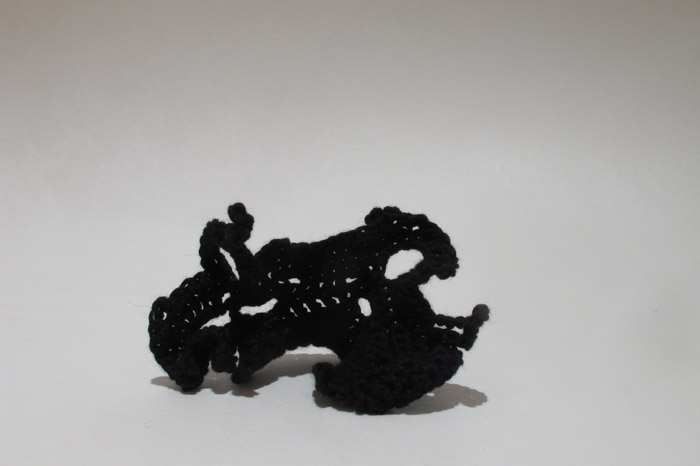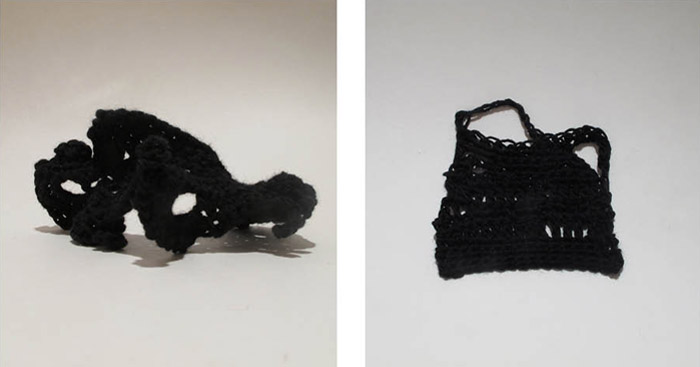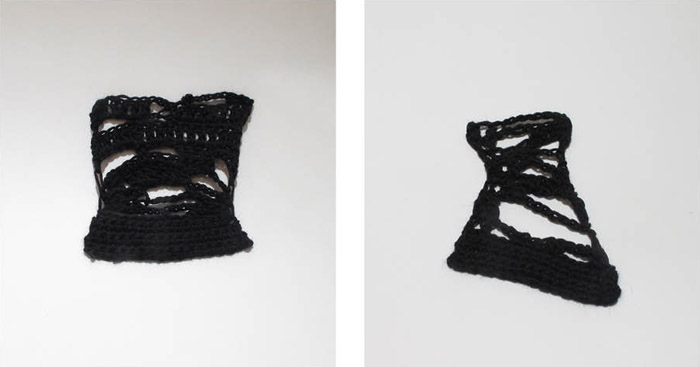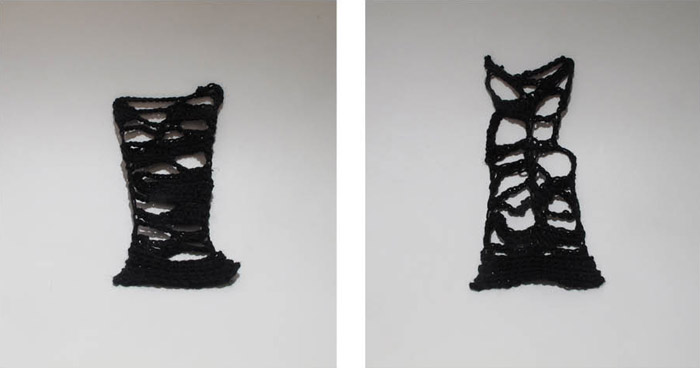Translation
The Crocheted Transcript

I conducted an experiment in which four knitters were asked to crochet according to certain perameters. In the tradition of oral storytelling, each knitter would listen to a story and crochet along, changing pattern according to what they heard. The women were given the same legend, or set of instructions, but allowed and encouraged to weave subjectively.
Pictured above is Julie Edwards' recording of a Hans Christian Andersen tale, The Tinderbox (12 min 57 seconds). In this story, a witch offers one soldier all the gold he could wish for in return for fetch- ing her magical tinderbox. He becomes greedy, takes all of the riches for himself, and weilds the magic of the tinderbox to win the hand of the princess.
The legend is a basic reflection of the storyline, but allows the listener to record their basic interpretation of the events. This is the pattern provided for the translation of language into form, or the language given them to speak:
Neutral – Single Crochet
Soldier – Chain 2
Witch – Chain 3
Dog – Chain 4
Princess – Chain 5
Happiness – Chain 6
Greed – Chain 7
Good – Chain 8
Bad – Double Crochet
This is a crocheted transcript – a series of woven stitches, which signify themes and milestones in a narrative. When you see it, you read it – not so unlike text on a page. It grows organically from one row to the next. It is a container for a story.
Traditions in storytelling aim to capture the essence of a narrative. What began as an oral tradition transformed into a printed recording – losing the element of personal delivery. It did, however, preserve stories that could otherwise have been lost. As those texts multiplied, so did the role of the reader. With each reading, the text would be reinterpreted by a diverse community. Ideas began to bleed into the margins and the once strict container of the page began its metamorphosis. Theorist, Johanna Drucker, identified the violent Futurist compositions of Fillippo Marinetti, in which he explodes textual arrangements. She writes, "Marinetti achieved an investigation in the way in which materiality served to establish a range of contrasts and values which simply, by the very form of their existence, could activate a literary work within the visual theater of the page, fluctuating between the effective presence of the graphic forms and the differential character of the linguistic elements."
Drucker follows Marinetti's progression as she writes, "The two orders of representation cannot be separated from each other here, nor can the limits of one upon the other be identified, each contribute, simultaneously, to a piece in which the work of both occurs without cancellation, without redundance, without easy resolution. Image and language are neither reducible nor separable from each other."
Johanna Drucker, The Visible Word: experimental typography and modern art, 1909 – 1923
In the crocheted transcript sessions, several knitters crocheted along as they listened to an audio recording. Through this method, the text and the physical recording merged in real time. The resulting pieces became unique recordings specific to their maker but similar in their context. This is an experiment in storytelling.



This book depicts the Crocheted Transcript Experiment. Each spread with opposing pieces depicts crocheted transcripts of the same story, each made by a different person. As these knitters translated the stories through the crochet pattern, the interpretive judgement calls made would determine the shape of the piece.
Taylorist Readers Reading my Writing about Reading
I spent a series of afternoons secretly observing readers and writing about their habits. From this writing about readers, I created a pamplet to distribute amongst other readers, who I then documented reading the writing I wrote about readers. This taylorist video study tracks the posture and patterns of readers in a reflexive state.